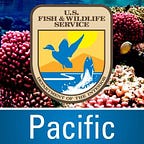Midway Atoll: Remembering Midway’s Heroes
In 1941, Midway Atoll represents one of the furthest outpost of the U.S. Hawaiian fleet defensive and communication network. The U.S. Marines of the 6th Defense Battalion stationed on Midway prior to the outbreak of WWII anxiously waited and trained as diplomatic talks between the United States and Japan came to an impasse. However, the waiting would soon come to an end and Midway’s Marines would be thrust into war. Along with Pearl Harbor, islands like Midway Atoll were also attacked as part of the Imperial Japanese navy’s plan to dismantle U.S. forces in the Pacific.
Like many young men during the outbreak of conflict in Europe and escalating Japanese aggression in the Pacific, 1st Lt. George Hamm Cannon joined the Marines in 1938 after graduating from the University of Michigan. Once commissioned and after a successful assignment on the west coast, Cannon was transferred to the 6th Defense Battalion. In just a short few months the battalion would be assigned to Midway Atoll. As December approached the Marines of Midway watched the seas around the island each day and awaited news from Honolulu.
It started with a trickle of activity but soon developed into war. As the bombs dropped on Pearl Harbor the Marines on Midway completed their daily routines. However, word of the attack would eventually traveled to Midway. First, a U.S. Army signal operator working in an administration building on Midway received a message that Wheeler Army Base was under attack. Second, while conducting a routine surfacing near Midway, the U.S.S. Trout, a U.S. Navy Tambor-class submarine, also received communications of the open hostilities with Japan. Many in Midway Atoll’s command group assumed that the correspondence was part of a realistic battle exercise. However, as the day continued Lt. Col. Harold Shannon, commander of the 6th Defense Battalion, realized that this was not a training exercise and soon elevated the island’s defensive posture. Marines mustered and reported to their Batteries.
The night of December 7th, Shannon foreshadowed the approaching attack, “the sand looked like snow and the breakers on the reef clearly outline the island area. It was an ideal night”. On that ideal night, the Japanese neutralization unit, whose mission was to prevent any potential attack from U.S. forces stationed on Midway, commenced their attack. The neutralization unit was comprised of the Japanese destroyers Ushio and Sazanami.
As the Marines of Midway dug into their positions, poised for a fight, Capt. Jean Buckner, commander of Artillery Battery “D”, heard the incoming sound of 5-inch projectiles. Buckner said the passing projectile, “sounded like a freight train passed immediately over our heads, followed by explosions in the vicinity of the powerhouse”.
Cannon and his fellow Marines were working in the Battery “H” command post located in the basement of the powerhouse. The powerhouse was a fortified building that could withstand a direct hit from conventional bombs of World War II. Only a few places on the building were vulnerable to attack. As Cannon and fellow Marines were manning the command post, a 5-inch shell fired during the attack struck the building in exactly that vulnerable location, the air shaft. There was immediate explosion; fire and shrapnel ripped through the command post.
Cannon along with others were struck. Cannon’s pelvis was crushed and he was bleeding internally. Despite what could only be considered excruciating pain, Cannon remained conscious and composed. Communication is key element to any military action and Cannon was moving to regain command and control of his battery. As help came from fellow Marines, he refused to leave his position until his command post was operational and all the injured Marines were evacuated.
On the evening of December 7th, while he was being forcibly removed from his post, Cannon completed his final mission as he succumbed to his injuries.
As a direct result of his actions, Cannon was posthumously awarded our nation’s highest military honor, the Medal of Honor. An excerpt from his citation reads:
“First Lieutenant Cannon was at his command post when he was mortally wounded by enemy shellfire. He refused to be evacuated from his post until after his men who had been wounded by the same shell were evacuated, and directed the reorganization of his command post until forcibly removed. As a result of his utter disregard of his own condition he died from loss of blood. He gallantly gave his life for his country. ”
The sacrifice and selfless service of those serving on Midway wouldn’t end with the sacrifice of Cannon, rather it was the start of Midway’s military legacy. A legacy steeped in hardship, dedication and personal courage.
As a memorial to the veterans that once served on Midway during WWII and to honor one of the most significant naval conflicts in U.S. history, Midway Atoll has been designated as a national memorial. The Battle of Midway National Memorial, a unit of the U.S. Fish and Wildlife Service, conserves and protects wildlife, nature and history of the island that many so valiantly stood to defend and the memory of all those who gave the greatest sacrifice.
Discover some of Midway’s major features, monuments with “Exploring Midway Atoll” story map.
The U.S. Fish and Wildlife Service works with others to conserve, protect, and enhance fish, wildlife, plants, and their habitats for the continuing benefit of the American people. For more information, connect with us through any of these social media channels at https://www.facebook.com/PacificIslandsFWS, www.flickr.com/photos/usfwspacific/, or www.twitter.com/USFWSPacific.
